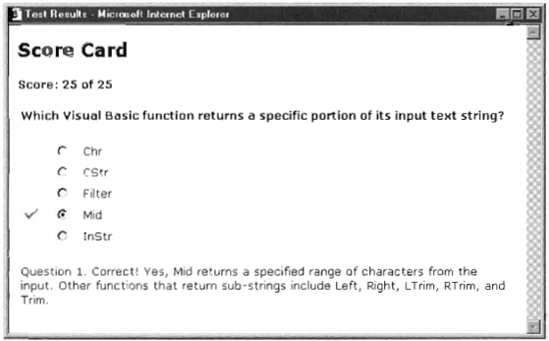7.8. For right answers ...
7.8.1. For right answers ...
For a correct answer, be brief. Tell learners they were right and state the main reason why (they might have guessed the answer). Be enthusiastic, but do not be effusive. For positive feedback, just say "Correct," "Right," or "Yes."
For right answers, challenge the learner to think about how they got the right answer and to consider other methods.
Right. How did you get your answer? Did you already know? Or did you look it up on a Web site or get it through a newsgroup? Or was some paper document the source?
The feedback for a correct answer can teach additional information. You already have the attention of a happy, receptive learner. Use it. Notice how the following example adds related information.

Praise out of season, or tactlessly bestowed, can freeze the heart as much as blame.
—Pearl S. Buck
7.8.2. For wrong answers...
For an incorrect answer, gently but clearly point out the problem.
7.8.2.1. Use a neutral term
For negative feedback, use a neutral term, such as "incorrect" without any exclamation points, please. You can also use "sorry" or "not quite," though these may seem a bit patronizing. Do not say, "Wrong!!!" or "Gotcha" or "I don't think so."
7.8.2.2. Do not embarrass or insult the learner
Do not shout at people if they get something wrong-no flashing headlines or embarrassing noises.
How would you ...
Get Designing Web-Based Training: How to Teach Anyone Anything Anywhere Anytime now with the O’Reilly learning platform.
O’Reilly members experience books, live events, courses curated by job role, and more from O’Reilly and nearly 200 top publishers.

